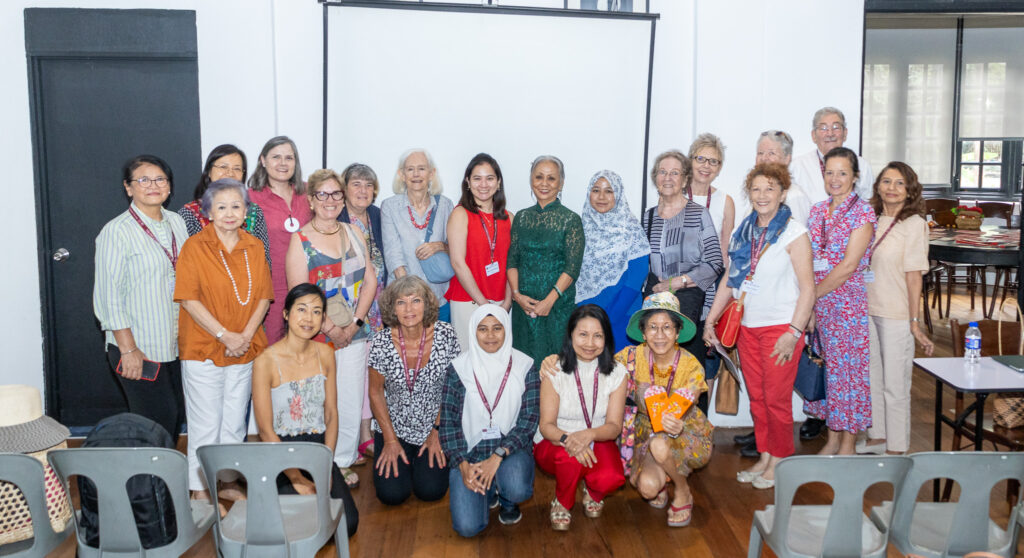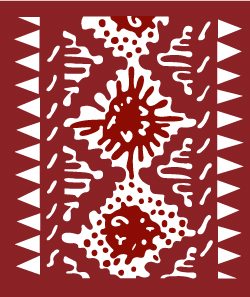January 2025 - Lunar New Year Traditions Talk

The guest speaker was Ms. Janet Tee Siew Mooi, former Director of the Museum Negara, Deputy Director of the Natural Museum in Putrajaya. Appointed as a Consultant to the Cultural & Heritage organisations after her retirement.
Topics were focused on the following;
1. Chinese Immigration to Malaya
In the 19th century, a wave of men came to Malaya in search of green pastures, while women were disallowed to leave their village. The young men who arrived first in Malaya spoke their tribal dialects; Hokkien, Cantonese, Hakka and Mandarin. They assimilated the local culture where they lived. Their first job was tin mining hired by the British.
2. The origin of CNY
It came about from the “ Legend of Nian” , a monstrous beast that terrorised the villagers, and destroyed their source of food and crops. The villagers noticed that the beast feared the colour RED, fire and extremely loud noise.
Thus, the villagers lit firecrackers, burned red lanterns, and pasted their doors with red papers to scare the beast away.
That’s why every CNY, everything is RED. The decorations, greeting cards, dresses and gifts. Besides the colour RED, the Lion Dance is practiced in many business establishments, at homes to welcome abundance, good luck in the coming years.
3. The 12 Zodiac Signs
The Jade Emperor invited all the animals in the universe. Only 12 showed up. As such, the first 12 animals sequencing are; the Rat, Ox, Tiger, Rabbit, Dragon, Snake, Horse, Goat, Monkey, Rooster, Dog, , and Pig.
4. Preparation for Lunar New Year
a) Winter Solstice
In ancient China, the villagers celebrate by preparing tang yuan, sweet glutinous rice balls, to keep them warm after hard work. In recent generation, families celebrate the Winter Solstice to welcome a new addition to the family especially male gender.
b) Practices before Chinese New Year
– Spring cleaning to discard old stuff. To give way for good luck in the coming years.
– Put up red lanterns
– Sending CNY greeting cards to family & friends
c) Beliefs
– Settling old debts to free from bad luck
– Offering food to deities such as the kitchen god and god of wealth.
5. Traditions on New Year’s Eve & Reunion
Every member of the family goes back home joining the Elders on New Year’s Eve for Reunion Dinner.
– Young family members greet their Elders Kong Hee Fatt Chai, offer Tea to show respect.
-Son- in- law brings Longevity Noodles to the in-laws.
6. Significant Dates in the CNY calendar
4rt Day of CNY- Zheng Due, also Birthday of the God of Wealth
7th Day of CNY- called the Humanity’s Birthday
8th Day night- Hokkien families offer sugarcane to their deities.
9th day – Bai Ti Kung (symbol of vitality & youth)
15th day- Chap Goh Mei theowing of Oranges in the river
7. Tossing of YeeSang
Yeesang is a totally a Malaysian invention, which originated in Seremban. Recent years been practiced in Taiwan, as well as in Hongkong.
8. Greetings
Gong Xi Fa Cai – in Mandarin
Kong Hei Fatt Choy – Cantonese
Kwong Hee Huat Chai- Hokkien
9. The colour RED in CNY
– symbolises good fortune, brings joy and good life.
– Round shape Lanterns means to embrace continuity of abundance
10. Cheer of YAM SENG
– Cheers of good fortune
11. CNY Firecrackers – to ward off evil spirits, and bad luck
12. Lion Dance
– symbolises festive celebration of money, abundance, peace, and harmony. Practiced in business establishment, and homes.
13. Delicacies
– Nian gao, Fa gao, Pineapple tart, Love letters, Kuih bangkit
14. New Year’s Eve Oranges
are Kum and Kwan
15. Floral decor
– Orchid, Plum blossom, Narcissus, and Peony
16. Taboos and Superstitions
– Sweeping the house. Don’t do it first day of CNY
– Use of knives, sharp objects . Cuts off your luck
– Colour black & white are for funerals, avoid it during CNY
– Haircut be done before CNY
– Buy new pair of shoes before CNY
– No buying of books on New Year
The one hour talk including the Q & A portion was indeed informative.
Thank you, Ms Janet Tee for sharing with us the cultural value of Chinese New Year.
Review thanks to Violet Dorall
